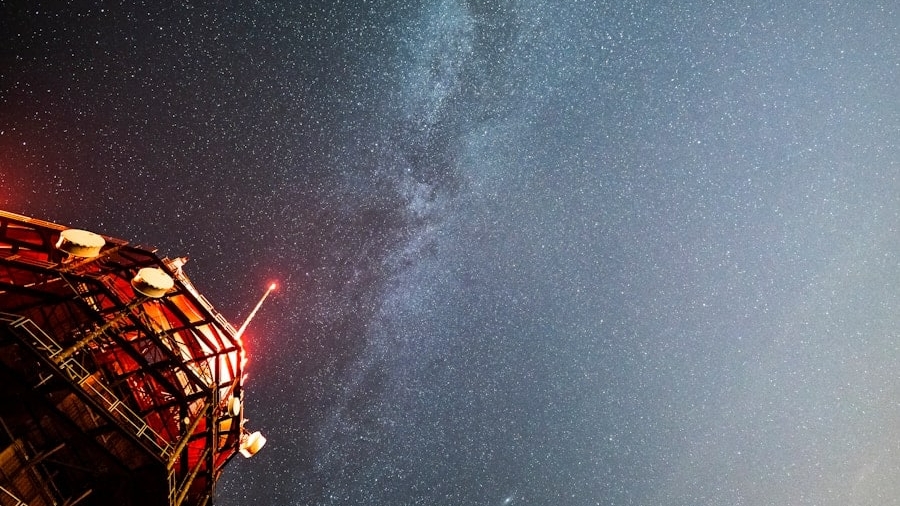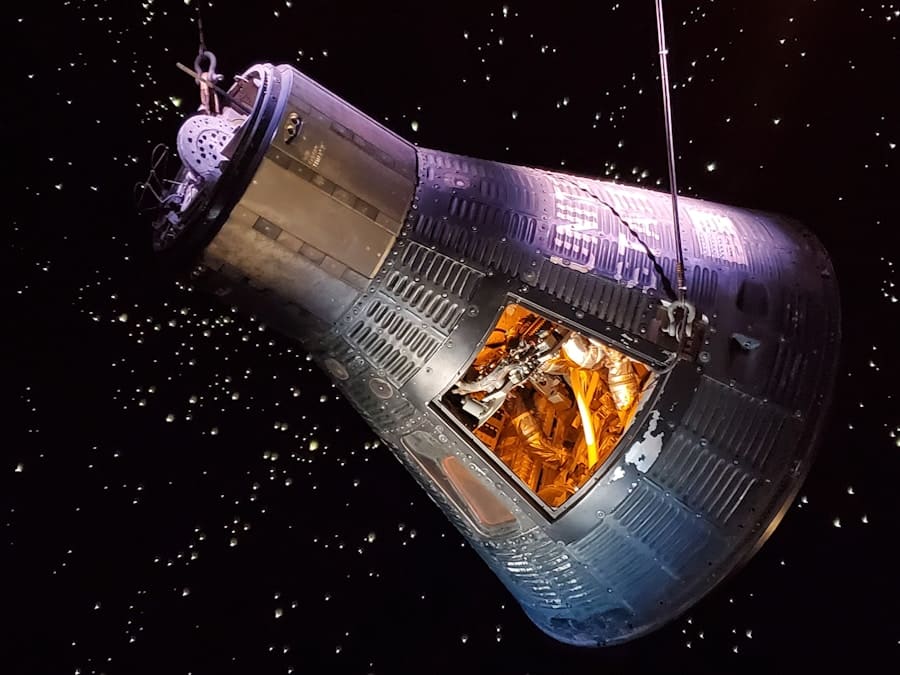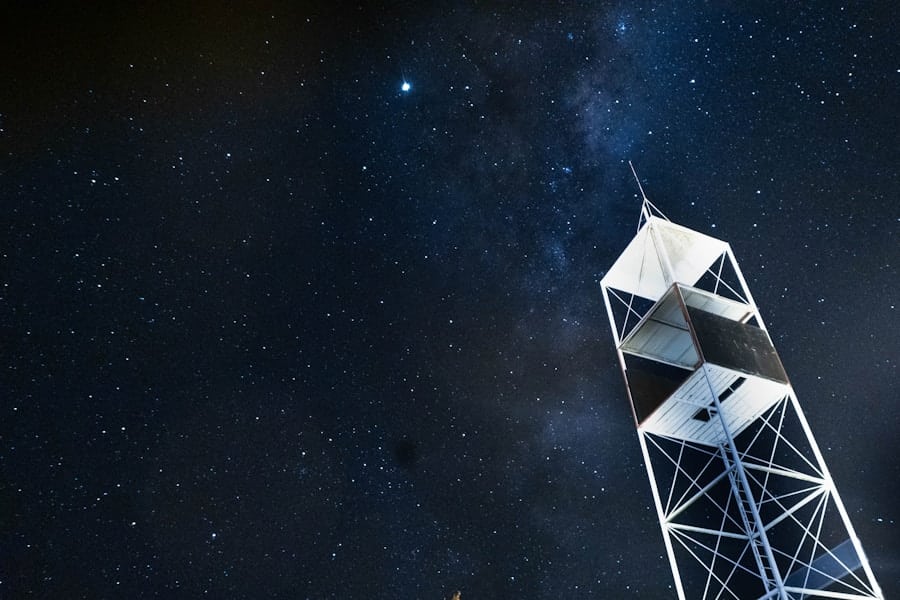The advent of artificial intelligence (AI) has revolutionized numerous fields, and astronomy is no exception. AI-driven space telescopes represent a significant leap forward in our ability to explore the cosmos, particularly in the search for exoplanets—planets that orbit stars outside our solar system. These advanced telescopes leverage machine learning algorithms and data processing techniques to analyze vast amounts of astronomical data, enabling scientists to identify celestial bodies that would otherwise remain undetected.
The integration of AI into space exploration not only enhances our observational capabilities but also accelerates the pace of discovery, allowing researchers to sift through the noise of cosmic data with unprecedented efficiency. The synergy between AI and space telescopes is particularly evident in missions like the Transiting Exoplanet Survey Satellite (TESS) and the upcoming James Webb Space Telescope (JWST). These missions generate enormous datasets that require sophisticated analysis to extract meaningful information.
Traditional methods of data analysis, which often rely on human interpretation and manual processing, are increasingly inadequate in the face of such complexity. AI algorithms can automate these processes, identifying patterns and anomalies that may indicate the presence of exoplanets or other astronomical phenomena. This paradigm shift not only enhances our understanding of the universe but also opens new avenues for research and exploration.
Key Takeaways
- AI-driven space telescopes are revolutionizing the way we discover exoplanets and explore the universe.
- AI plays a crucial role in analyzing vast amounts of data to identify potential exoplanets and distinguish them from other celestial objects.
- The use of AI in space telescopes offers advantages such as increased efficiency, accuracy, and the ability to process large volumes of data at a faster rate.
- However, challenges and limitations exist, including the potential for bias in AI algorithms and the need for human oversight and interpretation of results.
- Recent discoveries of exoplanets using AI-driven space telescopes have expanded our understanding of the universe and opened up new possibilities for future exploration.
The Role of AI in Exoplanet Discovery
AI plays a pivotal role in the discovery of exoplanets by enabling astronomers to analyze light curves—graphs that depict the brightness of stars over time. When a planet transits in front of its host star, it causes a temporary dip in brightness, which can be detected by telescopes. However, distinguishing these subtle changes from other astrophysical phenomena, such as stellar flares or noise, is a complex task.
Machine learning algorithms can be trained on large datasets to recognize the specific signatures associated with transiting exoplanets, significantly improving detection rates. One notable example of AI’s impact on exoplanet discovery is the work done by researchers at Google and NASA’s Jet Propulsion Laboratory (JPL). They developed a neural network that was trained on data from the Kepler Space Telescope, which had previously identified thousands of potential exoplanets.
By applying this AI model to new datasets, they were able to discover several new exoplanets with remarkable accuracy. This approach not only demonstrates the effectiveness of AI in identifying exoplanets but also highlights its potential to uncover previously overlooked candidates, thereby expanding our understanding of planetary systems.
Advantages of AI-Driven Space Telescopes
The advantages of AI-driven space telescopes are manifold, particularly in terms of efficiency and accuracy. One of the most significant benefits is the ability to process vast amounts of data in real-time. Traditional methods often involve lengthy manual analysis, which can delay discoveries and limit the scope of research.
In contrast, AI algorithms can analyze data streams as they are collected, allowing for immediate identification of potential exoplanets and other celestial phenomena. This rapid processing capability is crucial for missions that generate large volumes of data, such as TESS and JWST. Moreover, AI-driven telescopes can enhance the precision of measurements.
By employing advanced algorithms that account for various noise factors and systematic errors, these telescopes can produce more reliable results than traditional methods. For instance, AI can help differentiate between genuine planetary transits and false positives caused by stellar activity or instrumental noise. This increased accuracy not only improves the quality of scientific data but also reduces the likelihood of misidentifying celestial objects, which is essential for building a comprehensive understanding of exoplanetary systems.
Challenges and Limitations of AI-Driven Space Telescopes
Despite their numerous advantages, AI-driven space telescopes face several challenges and limitations that must be addressed to maximize their potential. One significant issue is the need for high-quality training data. Machine learning algorithms rely on large datasets to learn patterns and make predictions; however, obtaining sufficient labeled data for training can be difficult in astronomy.
For instance, while Kepler provided a wealth of data for training models, many other telescopes do not have comparable datasets available. This scarcity can hinder the development of robust AI models capable of generalizing across different observational contexts. Another challenge lies in the interpretability of AI models.
While machine learning algorithms can achieve impressive results in identifying exoplanets, understanding how these models arrive at their conclusions can be complex. This lack of transparency poses difficulties for researchers who need to validate findings and ensure that discoveries are scientifically sound. As a result, there is an ongoing need for methods that enhance the interpretability of AI-driven analyses while maintaining their predictive power.
Recent Discoveries of Exoplanets Using AI-Driven Space Telescopes
Recent advancements in AI-driven space telescopes have led to several groundbreaking discoveries in the field of exoplanet research. For example, in 2020, astronomers utilized machine learning techniques to analyze data from TESS and successfully identified a new class of exoplanets known as “sub-Neptunes.” These planets are smaller than Neptune but larger than Earth, providing valuable insights into planetary formation and evolution. The ability to classify these planets accurately has significant implications for our understanding of planetary systems beyond our own.
Additionally, researchers have employed AI algorithms to analyze archival data from previous missions, such as Kepler and Hubble Space Telescope (HST). By re-examining this wealth of information with modern machine learning techniques, scientists have uncovered previously unnoticed exoplanets and refined existing classifications. This approach not only demonstrates the power of AI in enhancing our understanding of known systems but also emphasizes the importance of revisiting older datasets with new analytical tools.
Future Prospects and Developments in AI-Driven Space Telescopes
Upcoming Missions and AI-Driven Analysis
Upcoming missions, such as the European Space Agency’s Ariel mission, aim to study the atmospheres of exoplanets using advanced spectroscopic techniques. The integration of AI into these missions will likely play a crucial role in analyzing atmospheric data and identifying chemical signatures indicative of habitability or biological activity.
Advancements in Technology and Performance
As technology continues to advance, we can expect improvements in both hardware and software that will enhance the performance of AI-driven telescopes. Innovations such as more sensitive detectors and faster processing units will enable telescopes to gather and analyze data more efficiently than ever before.
Deep Learning and Pattern Recognition
Advancements in deep learning techniques may lead to even more sophisticated models capable of identifying complex patterns within astronomical data.
Collaborations between AI and Human Researchers in Exoplanet Discovery
The collaboration between AI systems and human researchers is essential for maximizing the potential of AI-driven space telescopes in exoplanet discovery. While AI excels at processing large datasets and identifying patterns, human expertise remains invaluable for interpreting results and guiding research directions. This partnership allows scientists to leverage the strengths of both AI and human intuition, leading to more comprehensive analyses and innovative approaches to problem-solving.
For instance, researchers often work alongside AI systems to refine algorithms based on their domain knowledge and experience. By providing feedback on model predictions or adjusting parameters based on scientific insights, human researchers can enhance the performance of AI models significantly.
Ethical Considerations in AI-Driven Space Telescope Research
As with any technological advancement, ethical considerations surrounding AI-driven space telescope research must be addressed. One primary concern is the potential for bias in machine learning algorithms. If training datasets are not representative or contain inherent biases, the resulting models may produce skewed results that could mislead scientific conclusions.
Ensuring diversity in training data and implementing fairness checks are essential steps toward mitigating these risks. Additionally, there are broader ethical implications related to the use of AI in scientific research. The increasing reliance on automated systems raises questions about accountability and transparency in decision-making processes.
As AI systems become more autonomous in analyzing astronomical data, it is crucial to establish guidelines that ensure responsible use while maintaining scientific integrity. Engaging with ethicists and interdisciplinary teams can help navigate these challenges and promote ethical practices in AI-driven space telescope research. In summary, while AI-driven space telescopes offer transformative potential for exoplanet discovery and astronomical research, it is essential to address challenges related to data quality, interpretability, collaboration with human researchers, and ethical considerations to fully realize their capabilities in exploring the cosmos.
In a related article, com/exploring-the-features-of-the-samsung-galaxy-book-odyssey/’>Exploring the Features of the Samsung Galaxy Book Odyssey, the advancements in technology are highlighted as we delve into the capabilities of this innovative device.
Just as AI-driven space telescopes are revolutionizing the discovery of new exoplanets, the Samsung Galaxy Book Odyssey is pushing the boundaries of what is possible in the world of computing. Both articles showcase how cutting-edge technology is opening up new worlds of possibilities and expanding our understanding of the universe.
FAQs
What are AI-driven space telescopes?
AI-driven space telescopes are telescopes equipped with artificial intelligence (AI) technology that can analyze and process large amounts of data to identify and classify celestial objects such as exoplanets.
How do AI-driven space telescopes discover new exoplanets?
AI-driven space telescopes use machine learning algorithms to analyze the data collected from observing distant stars. These algorithms can identify patterns and anomalies that may indicate the presence of exoplanets orbiting those stars.
What are exoplanets?
Exoplanets are planets that orbit stars outside of our solar system. They are also known as extrasolar planets.
How has AI technology improved the discovery of exoplanets?
AI technology has improved the discovery of exoplanets by enabling telescopes to process and analyze data more efficiently and accurately. This has led to the discovery of a larger number of exoplanets and has expanded our understanding of the diversity of planetary systems in the universe.
What are the benefits of using AI-driven space telescopes for discovering exoplanets?
AI-driven space telescopes can process large amounts of data quickly, which allows for the discovery of exoplanets more efficiently. This technology also helps to identify exoplanets that may have been previously overlooked using traditional methods.
What are some examples of AI-driven space telescopes that have discovered new exoplanets?
Examples of AI-driven space telescopes that have discovered new exoplanets include the Kepler Space Telescope and the Transiting Exoplanet Survey Satellite (TESS). These telescopes have used AI technology to analyze data and identify exoplanets in distant star systems.



